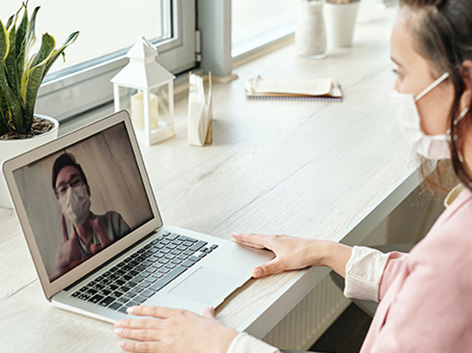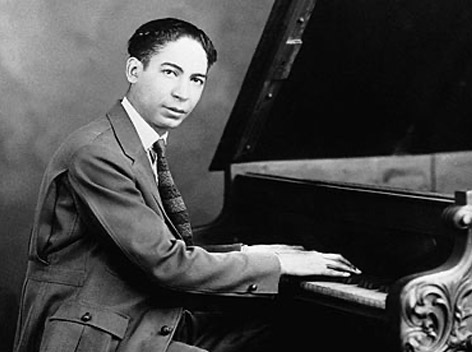
The Spirituality of COVID Risk
Well over one year on, the COVID-19 pandemic continues to dramatically disrupt lives around the world. As scientists have rushed to understand this new health risk, people of faith have also raised questions about a theology of risk during this crisis.[1] Some describe COVID-19 as a global wake-up call for social justice and human rights.[2] How can faith communities best contribute to the common good in this pandemic?[3] As they seek to be part of the solution, faith communities should develop fluency in the biomedical language of health risk[4] and faith leaders should “translate” such risk communications into their local contexts in order to help protect and support their congregations and communities.
The causative virus, SARS-CoV-2,[5] presents a perfect storm of attributes that heighten public health risk perception. It is an invisible, unfamiliar, unpredictable, dreaded, involuntary, and undetectable hazard.[6]Governments at all levels have scrambled to provide protective directives in the midst of evolving scientific understanding,[7] but there have been some conflicting agendas and inconsistent advisories in the management of this outbreak.[8] Faith communities have been caught up in these waves of emergency measures and, congregational gatherings have occasionally provided opportune venues for the transmission of the virus.[9]
In the face of social distancing rules and other limitations on their group activities, faith communities have turned to media technologies to maintain congregational engagement. About forty percent of regular worship attendees have replaced their in-person worship with a media platform.[10] This is bringing about a new virtual sacred space and a distributed corporate presence.[11] As one author puts it, “God has allowed the coronavirus pandemic for some reason at this particular time in history, and it coincides with the present booming age of technology that connects people both near and far at virtually no cost or risk to health.”[12]
We are looking forward to the day when life will return to normal with effective vaccines[13] but things may never be quite the way they were. In the meantime, congregations need to maintain best practices to protect their adherents during the pandemic. There are many good online resources specifically directed to faith communities to help them in such efforts.[14] There is also information available to guide religious organizations as employers.[15]
Social anthropologist Dame Mary Douglas (1921–2007) has said that “if Western industrial democracy were ever to build a homogeneous culture using a uniform vocabulary for moralizing and politicizing the dangers around, it could not use the vocabulary of religion. The neutral vocabulary of risk is all we have for making a bridge between the known facts of existence and the construction of a moral community.”[16] Whether or not they agree with this claim, faith communities should learn the language of risk in order to be credible partners in the control of pandemics such as COVID-19. Faith leaders need to promote evidence-based risk management resources for the good of their congregations and wider society. Leaders themselves need social support.[17]
Along with taking precautions to prevent the transmission of SARS-CoV-2, faith communities also have a mandate to minister to the spiritual needs of their members and those beyond because “it is evident that religious and spiritual interventions play a crucial role in this public health crisis. They guide people to find meaning and acceptance in the midst of suffering while engaging in the deepest questions of life.”[18] Faith communities have much to offer people who are troubled by personal and social upheavals during this pandemic. The loss of social contacts has left many feeling (more) lonely and isolated. These times call for creative measures and risk taking. Faith communities must navigate the biomedical model of health risk to learn its language in seeking the common good during this pandemic. Maybe it’s also time to recover a theology of risk[19] to correct some distorted risk perceptions during this COVID-19 crisis.
In summary, our faith communities should:
1. Stay on board with credible health risk solutions and public partnership
The general public has been particularly critical of those who show disregard for recommended health risk precautions, yet a few congregations have flaunted their resistance to these rules. Whether or not religious groups can win some legal challenges to health orders,[20] faith leaders should engage in partnership, not opposition to the common good. Faith communities can offer an added dimension of care that is essential in fostering personal resilience during this pandemic.
2. Support the well-being of pastoral front line workers
Much has rightly been written about the occupational health risks of health care workers but there is almost nothing in the medical literature addressing the mental health risks to professional and lay pastoral workers. Faith communities need to take steps to protect the physical and mental health of their own spiritual care-givers during the psychological pandemic that is very much a part of this COVID-19 outbreak.
3. Re-set the risk management of pastoral care
Congregations have quickly adopted media technologies to enable participation from home. For now, the home has regained the sacred space that it once had in the early Christian movement two thousand years ago,[21] when private homes and other venues[22]played an effective role in managing the risks of imperial and cultural hostility to a new social movement. Our twenty-first century COVID pandemic presents a new opportunity to faith communities to break out of familiar forms and risk a more inclusive future for the common good.
[1] Jianhui (Jane) Xiong, Nazila Isgandarova, Amy Panton, “COVID-19 demands theological reflection: Buddhist, Muslim, and Christian perspectives on the present pandemic.” International Journal of Practical Theology 24.1(2020):5-28.https://www.degruyter.com/journal/key/IJPT/24/1/html
[2] Maxwell Smith, Ross Upshur, “Learning lessons from COVID-19 requires recognizing moral failures.” Journal of Bioethical Inquiry17.4(December 2020):563-566. https://www.ncbi.nlm.nih.gov/pmc/articles/PMC7445711/; Eric Mykhalovskiy et al. “Human rights, public health and COVID-19 in Canada.” Canadian Journal of Public Health 111.6(December 2020):975-979.https://link.springer.com/article/10.17269/s41997-020-00408-0; Clive Pearson, “Framing a theological response to COVID-19 in the presence of the religious other.” The Ecumenical Review 72.5(December 2020):849-860.https://onlinelibrary.wiley.com/doi/10.1111/erev.12577
[3] Jeff Levin, “The faith community and the SARS-CoV-2 outbreak: Part of the problem or part of the solution?” Journal of Religion and Health 59.5(October 2020):2215-2228.https://www.ncbi.nlm.nih.gov/pmc/articles/PMC7265665/
[4] Canada’s “Glossary on the COVID-19 pandemic” is an official website clarifying terminology in order to support effective risk communication. https://www.btb.termiumplus.gc.ca/publications/covid19-eng.html
[5] Severe Acute Respiratory Syndrome Coronavirus, see Ben Hu et al. “Characteristics of SARS-CoV-2 and COVID-19.” Nature Reviews Microbiology 19.3(March 2021):141-152. https://www.nature.com/articles/s41579-020-00459-7
[6] The psychometric study of risk perception has shown that we bias our estimates of actual risks according to their apparent knowability, controllability, consequences, and equity. See, e.g., Paul Slovic, “Perception of risk.” Science 236.4799(April 17, 1987):280-285 https://fbaum.unc.edu/teaching/articles/Science-1987-Slovic.pdf; Michael Siegrist, Joseph Árvai, “Risk perception: Reflections on 40 years of research.”Risk Analysis40.S1(November 2020):2191-2206; Mohsen Khosravi, “Perceived risk of COVID-19 pandemic: The role of public worry and trust.”Electronic Journal of General Medicine 17.4(2020)em203https://www.ejgm.co.uk/article/perceived-risk-of-covid-19-pandemic-the-role-of-public-worry-and-trust-7856
[7] Jeffrey Shaman, Marta Galanti, “Will SARS-CoV-2 become endemic?”Science 370.6516(October 30, 2020):527-529. https://science.sciencemag.org/content/sci/370/6516/527.full.pdf
[8] See, e.g., Peter Sandman, “Public health’s share of the blame: US COVID-19 risk communication failures.” https://www.psandman.com/articles/Corona31.pdf; Benjamin Althouse et al., “The unintended consequences of inconsistent pandemic control policies.” medRxiv (preprint August 24, 2020) https://www.ncbi.nlm.nih.gov/pmc/articles/PMC7457624/
[9] Sarah Ee Fang Yong et al., “Connecting clusters of COVID-19: An epidemiological and serological investigation” Lancet 20.7(July 1, 2020):809-815 https://www.thelancet.com/action/showPdf?pii=S1473-3099%2820%2930273-5 ; Nam Joong Kim et al., “A cluster of tertiary transmissions of 2019 novel coronavirus (SARS-SoV-2) in the community from infectors with common cold symptoms.” Korean Journal of Internal Medicine 35.4(July 2020):758-764 https://www.kjim.org/upload/kjim-2020-122.pdf; Lea Hamner et al., “High SARS-CoV-2 attack rate following exposure at a choir practice – Skagit County, Washington, March 2020.”Morbidity and Mortality Weekly Report69.19(May 15, 2020):606-610https://www.cdc.gov/mmwr/volumes/69/wr/mm6919e6.htm; Allison James et al., “High COVID-19 attack rate among attendees at events at a church – Arkansas, March 2020.” Morbidity and Mortality Weekly Report 69.20(May 22, 2020):632-635 https://www.cdc.gov/mmwr/volumes/69/wr/pdfs/mm6920e2-H.pdf; Sayed Quadri, “COVID-19 and religious congregations: Implications for spread of novel pathogens."International Journal of Infectious Diseases96(July 2020):219-221https://www.ijidonline.com/article/S1201-9712(20)30313-1/pdf; David Singh, “Role of religions in the spread of COVID-19.”Journal of Ecumenical Studies55.2(Spring 2020):289-310.
[10] Brenda Wiederhold (Editorial), “Turning to faith and technology during the coronavirus disease 2019 crisis.” Cyberpsychology, Behavior, and Social Networking23.8(August 2020):503-504 https://www.liebertpub.com/doi/pdf/10.1089/cyber.2020.29191.bkw
[11] John Bryson, Lauren Andres, Andrew Davies, “COVID-19, virtual church services and a new temporary geography of home.” Tijdschrift voor Economische en Sociale Geografie111.3(July 2020):360-372 https://onlinelibrary.wiley.com/doi/epdf/10.1111/tesg.12436; Helen Parish, “The absence of the Presence and the presence of absence: Social distancing, sacraments, and the virtual religious community during the COVID-19 pandemic.” Religions 11.6(June 2020):276,https://www.mdpi.com/2077-1444/11/6/276
[12] Harold Koenig, “Maintaining health and well-being by putting faith into action during the COVID-19 pandemic.” Journal of Religion and Health 59.5(October 2020):2205-2214, 2208 https://link.springer.com/article/10.1007/s10943-020-01035-2
[13] Such vaccines will need an efficacy of 70-80% to extinguish an epidemic without other measures, Sarah Bartsch et al. “Vaccine efficacy needed for a COVID-19 coronavirus vaccine to prevent or stop an epidemic as the sole intervention.” American Journal of Preventive Medicine 59.4(October 2020):493-503 https://www.ajpmonline.org/article/S0749-3797(20)30284-1/pdf
[14] See, e.g., https://www.evangelicalfellowship.ca/Communications/Articles/March-2020/COVID-19-Resources-for-Churcheshttp://www.bccdc.ca/health-info/diseases-conditions/covid-19/community-settings/faith-based-spiritual-and-worship-practices https://www.toronto.ca/wp-content/uploads/2020/06/978e-COVID-19-Guidance-for-Places-of-Worship.pdfhttps://www.cdc.gov/coronavirus/2019-ncov/community/faith-based.htmlhttps://www.gov.uk/government/publications/covid-19-guidance-for-the-safe-use-of-places-of-worship-during-the-pandemic-from-4-july.
[15] “Workplaces and Covid-19: Occupational Health and Safety Considerations for Reopening and Operating During the Pandemic CSA Group, September 2020.https://www.csagroup.org/wp-content/uploads/CSA-Group-Research-Workplaces-and-COVID-19-Occupational-Health-and-Safety-Considerations.pdf
[16] Mary Douglas, “Risk as a forensic resource”Daedalus119.4(Fall 1990):1-16, 5.
[17] Talya Greene, Michael Bloomfield, Jo Billings, “Psychological trauma and moral injury in religious leaders during COVID-19.” Psychological Trauma: Theory, Research, Practice, and Policy 12.Supplement 1(August 2020):S143-S145https://psycnet.apa.org/fulltext/2020-41718-001.pdf
[18] Fides del Castillo, Hazel Biana, Jeremiah Joaquin, “ChurchInAction: The role of religious interventions in times of COVID-19.” Journal of Public Health (Oxford) 42.3(September 2020):633-634, 633. https://academic.oup.com/jpubhealth/article/42/3/633/5856780
[19] Claude Welch, “Theology as risk”The Christian Century82.22(June 2, 1965):707-710; David Lotz, “Theology as risk”Union Seminary Quarterly Review 29.3-4(Spring and Summer 1974):169-180; Niels Gregersen, “Risk and religion: Toward a theology of risk taking.” Zygon 38.2(June 2003):355-376; Michael Frost, Alan Hirsch, The Faith of Leap: Embracing a Theology of Risk, Adventure and Courage. Grand Rapids: Baker Books, 2011.
[20] Mark Hill, “Coronavirus and the curtailment of religious liberty.”Laws 9.4(November 2020):27 https://www.mdpi.com/2075-471X/9/4/27?type=check_update&version=3
[21] Roger Gehring, House Church and Mission. Peabody, MA: Hendrickson, 2004. Bradley Blue, In Public and in Private: The Role of the House Church in Early Christianity. PhD Diss. University of Aberdeen, 1989.
[22] Edward Adams, The Earliest Christian Meeting Places: Almost Exclusively Houses? London: Bloomsbury T&T Clark, 2013.


